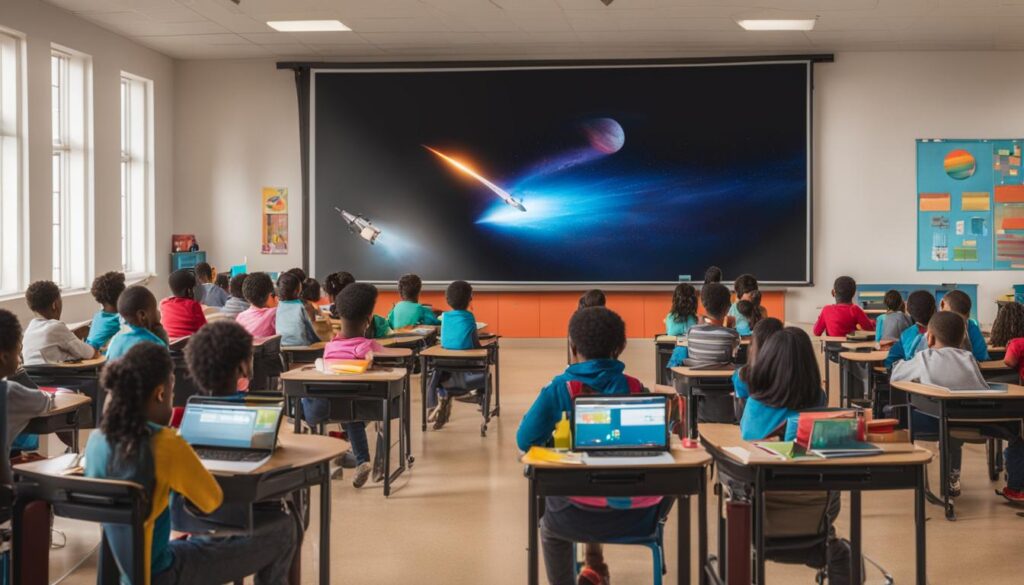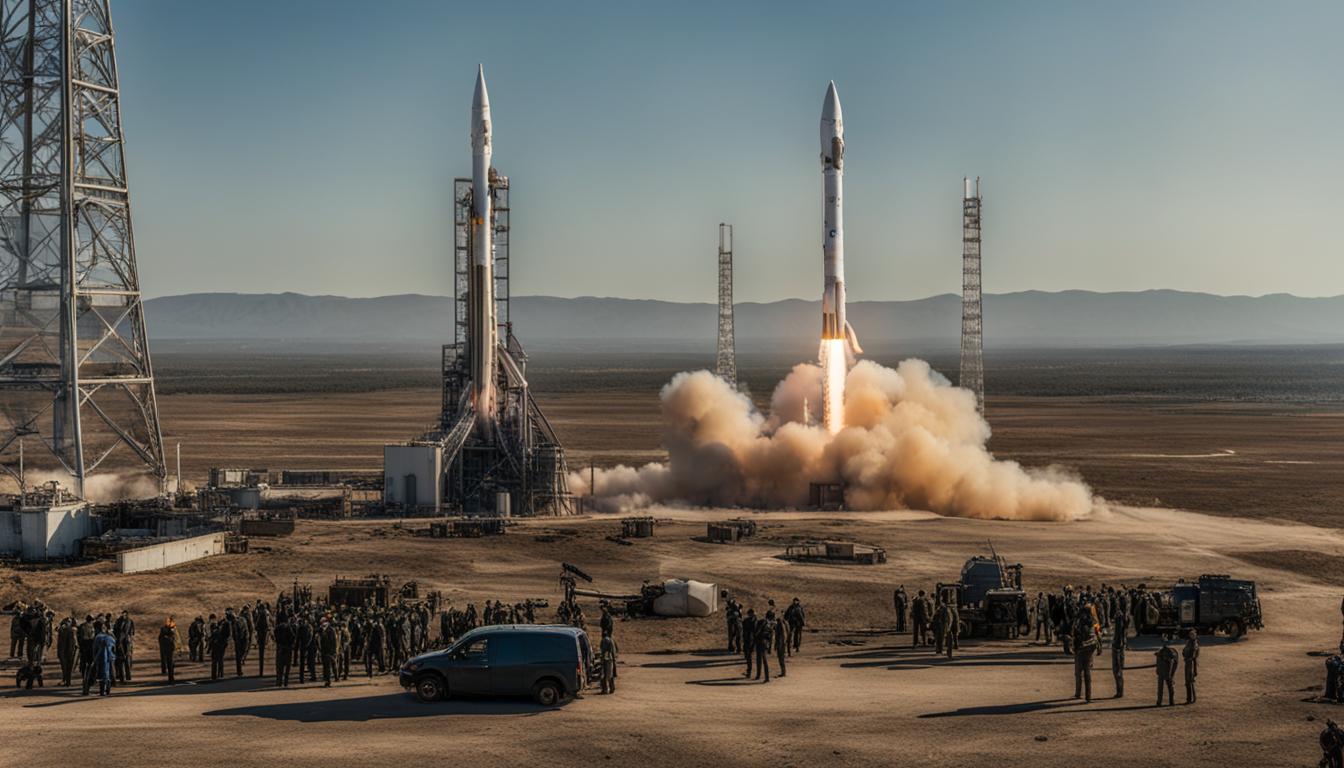On October 4, 1957, the Soviet Union launched the first earth-orbiting satellite, Sputnik, shocking the United States and highlighting its technological inferiority. This event, known as the Sputnik launch, catalyzed increased U.S. spending on education and technology.
The fear of falling behind the Russians in the Space Race led to the passage of the National Defense Education Act (NDEA) in 1958, which provided federal funding for education and boosted spending on science, mathematics, and foreign language education.
The NDEA also made low-cost student loans available, resulting in a significant increase in college enrollment. The Sputnik launch was a pivotal moment that spurred advancements in education and set the stage for the U.S. to become a leader in technology and innovation.
Contents
- 1 The Impact of Sputnik on Education Reform
- 2 Government Initiatives and Institutions Created After Sputnik
- 3 The Window for Change and Obstacles to Education Reform
- 4 Conclusion
- 5 FAQ
- 5.1 What event increased U.S. spending on education and technology?
- 5.2 How did the Sputnik launch impact education reform in the United States?
- 5.3 What government initiatives and institutions were created after the Sputnik launch?
- 5.4 What lessons can be learned from the Sputnik moment?
- 5.5 Why is there a need for a science education overhaul?
- 5.6 Is there an opportunity for education reform after the Iraq war?
- 5.7 What is the conclusion of the impact of the Sputnik launch?
- 6 Source Links
Key Takeaways:
- The Sputnik launch in 1957 prompted the United States to increase spending on education and technology.
- The National Defense Education Act (NDEA) was passed in 1958 to provide federal funding for education and prioritize science, mathematics, and foreign language education.
- The NDEA also introduced low-cost student loans, which led to a significant increase in college enrollment.
- The Sputnik launch set the stage for the U.S. to become a leader in technology and innovation.
- This pivotal historical moment continues to inform the need for sustained investment in education and technology to ensure national competitiveness.
The Impact of Sputnik on Education Reform
The launch of Sputnik in 1957 profoundly impacted education reform in the United States. Recognizing the need to enhance science and engineering education to compete with the Soviet Union in the Space Race, the U.S. government took significant steps to prioritize these fields.
The National Defense Education Act (NDEA) was passed in 1958 as a direct response to the Sputnik launch. This legislation provided federal funding for education at all levels and strongly emphasized scientific and technical education.
The NDEA made low-interest student loans available to college students, facilitating greater access to higher education.
The act also played a crucial role in promoting STEM (science, technology, engineering, and mathematics) education, recognizing its importance for the nation’s future.
The reforms introduced under the NDEA aimed to transform the education system. Hands-on laboratory experiences became a focal point, allowing students to engage actively with scientific concepts and develop essential skills.
The link between education and national security was underscored, emphasizing the critical role of a scientifically literate workforce in maintaining the country’s military and technological advantage.
Also Read: Discover Devices Using Ampak Technology
The launch of Sputnik served as a wake-up call for the United States. It highlighted the urgent need to invest in education to ensure the nation’s competitiveness in science and technology.
Thanks to the impact of Sputnik, education reform gained traction, paving the way for future advancements in science and technology. The reforms initiated under the NDEA brought about crucial changes that helped shape the educational landscape and prepare the country for the technological challenges and innovations of the following decades.
In summary, the launch of Sputnik propelled the United States into action, leading to significant education reforms. The NDEA provided federal funding, prioritized science and engineering education, and underscored the importance of STEM fields, setting the stage for a future driven by technological advancements.
Government Initiatives and Institutions Created After Sputnik
The launch of Sputnik prompted the U.S. government to take action and invest in technological advancements. In 1958, Congress passed the National Aeronautics and Space Act, establishing NASA and allocating significant funding to land a man on the moon.
This led to major technological breakthroughs and innovations with wide commercial applications. The government also established the Advanced Research Projects Agency (DARPA) to prevent future technological surprises.
DARPA’s research contributed to the development of GPS and voice recognition and played a crucial role in creating the Internet. Furthermore, the National Science Foundation invested in education reforms, further strengthening the country’s science and technology base.
A significant increase in federal R&D spending during this time laid the foundation for the robust tech and startup communities we see today.
Key Government Initiatives and Institutions:
| Initiatives/Institutions | Focus |
|---|---|
| NASA (National Aeronautics and Space Administration) | Advancements in space exploration and technology |
| DARPA (Defense Advanced Research Projects Agency) | Research and development to maintain technological superiority |
| National Science Foundation | Investment in scientific research and education reform |

The Impact of Science Education Reforms
Science education reforms have a profound impact on students’ learning experiences. By introducing hands-on laboratory experience and emphasizing practical application, students develop critical thinking, problem-solving, and collaboration skills.
These skills are essential in the face of global economic competition, as industries increasingly rely on scientific and technological advancements. Science education reforms also enhance students’ understanding of complex scientific concepts, fostering an interest in STEM fields and careers.
Also Read: Unlock Benefits with Masonry Technology Advancements
By investing in science education, the United States can cultivate a highly skilled workforce and maintain its position in the global economic landscape.
The Role of Skilled Teachers
The success of science education reforms hinges on the presence of skilled teachers who can effectively deliver quality instruction. Skilled teachers deeply understand scientific concepts and pedagogical strategies that engage students in the learning process.
They foster a supportive and stimulating classroom environment that encourages inquiry and exploration. Investing in teacher training programs and attracting talented individuals to the teaching profession is crucial for the success of science education overhauls.
By empowering skilled teachers, the United States can lay a strong foundation for future scientific advancements and global economic competitiveness.
Funding and Resources
Implementing a comprehensive science education overhaul requires adequate funding and resources. Governments, educational institutions, and private organizations must prioritize science education and allocate resources accordingly.
This includes investing in state-of-the-art laboratories, up-to-date scientific equipment, and relevant educational materials. Furthermore, partnerships between academia, industry, and government can facilitate access to internships, mentorship programs, and real-world applications of scientific knowledge.
By ensuring sufficient funding and resources, the United States can effectively implement science education reforms and equip students with the skills necessary to thrive in the global economy.
Collaboration and Partnerships
Science education reforms require collaboration and partnerships among various stakeholders. This includes educators, policymakers, industry leaders, and community organizations. By working together, these stakeholders can align their efforts, share best practices, and leverage resources to maximize the impact of science education reforms.
Collaboration fosters innovation, enhances the quality of instruction, and strengthens the connection between education and real-world applications. By fostering collaborative partnerships, the United States can create a vibrant ecosystem that supports science education and advances its global economic competitiveness.
| Benefits of Science Education Overhaul | Actions Needed |
|---|---|
| Development of critical thinking and problem-solving skills | Investment in teacher training and professional development programs |
| Preparation of a skilled workforce for STEM industries | Allocation of sufficient funding and resources |
| Enhancement of students’ understanding of complex scientific concepts | Collaboration and partnerships among stakeholders |
The Window for Change and Obstacles to Education Reform

As the Iraq war winds down, there is optimism among education experts that a window for change may open, presenting a crucial opportunity for education reform.
The aftermath of a conflict often provides a unique moment where stakeholders are more receptive to implementing significant changes in the education system.
However, while this change window exists, several obstacles must be overcome to achieve meaningful reforms.
One of the primary challenges is the crowded political agenda. With numerous pressing issues demanding attention, education reform often struggles to gain the focus and political will necessary for effective change. Public attention is often fragmented as politicians juggle a multitude of conflicting priorities.
Also Read: Should You Enable Intel Adaptive Boost Tech?
Moreover, education reform is a subject that attracts various stakeholders with conflicting agendas. The diverse interests in the education sector can create competing visions and hinder progress.
Policymakers must navigate these conflicting interests tactfully and carefully, ensuring that the reforms address the needs and aspirations of all involved parties.
Despite these challenges, history has shown that the end of a conflict can be a catalyst for significant reforms. The post-war period provides an opportunity for reflection and reevaluation of priorities, including education. It is during this time that the public attention can be redirected towards building a better future through meaningful education reform.
To achieve lasting changes in the education system, education must remain a priority beyond the immediate aftermath of the conflict.
Sustained investment and commitment are crucial to ensuring that the reforms have a lasting impact and drive positive change in the lives of students and communities. While obstacles exist, it is important to leverage this window for change and seize the opportunity to make long-awaited improvements in education.
Obstacles to Education Reform:
- Crowded political agenda
- Conflicting agendas among stakeholders
Conclusion
The Sputnik launch was a defining moment in history that profoundly impacted U.S. technological competitiveness. It sparked a wave of education reforms and increased investment in science and technology, setting the stage for significant advancements.
The lessons learned from the Sputnik moment emphasize the importance of sustained investment in the science and technology base. The U.S. must prioritize education reform, ensuring that students are equipped with the skills and knowledge necessary for future challenges.
By embracing the spirit of Sputnik, the U.S. can reclaim its position as a leader in technological competitiveness. Clear national objectives and flexible approaches to technology investment will pave the way for innovation and progress.
Through continued dedication and commitment, the U.S. can secure a bright future, driving advancements in science and technology that will shape the world for future generations.
FAQ
What event increased U.S. spending on education and technology?
The event that increased U.S. spending on education and technology was the launch of the Sputnik satellite by the Soviet Union on October 4, 1957.
How did the Sputnik launch impact education reform in the United States?
The Sputnik launch prompted significant education reforms, leading to the passage of the National Defense Education Act (NDEA) in 1958. The NDEA provided federal funding for education, prioritizing science, mathematics, and foreign language education. It also introduced low-cost student loans and supported STEM education.
What government initiatives and institutions were created after the Sputnik launch?
After the Sputnik launch, NASA (National Aeronautics and Space Administration), DARPA (Defense Advanced Research Projects Agency), and the National Science Foundation were established. These institutions played important roles in technological advancements and education reforms.
What lessons can be learned from the Sputnik moment?
The Sputnik moment teaches us the importance of sustained investment in the science and technology base, clear national objectives, and flexible approaches to technology investment. It also highlights the need for ongoing education reforms to prepare the workforce for future challenges.
Why is there a need for a science education overhaul?
Experts suggest that a science education overhaul is needed to prepare students for the challenges of the future. Science education reforms, similar to those implemented after the Sputnik launch, can provide hands-on laboratory experience and ensure students are equipped with the necessary skills for a technology-driven world.
Is there an opportunity for education reform after the Iraq war?
The end of a conflict, like the Iraq war, can present an opportunity for education reform. However, there are obstacles such as a crowded political agenda and conflicting stakeholder agendas. Despite these challenges, history shows that reforms can be enacted and funded during this window of opportunity.
What is the conclusion of the impact of the Sputnik launch?
The impact of the Sputnik launch led to increased U.S. spending on education and technology. It prompted education reforms, the creation of key government initiatives and institutions, and highlighted the need for sustained investment in science and technology. Education reform and technological competitiveness remain essential for the future of innovation and progress.




